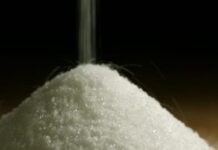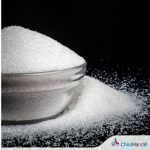An interesting fact that has come to light in the ongoing sugar season is the uptick in domestic sugar consumption. DFPD on Friday informed that annual sugar consumption in India has reached around 290 lakh tonnes (LMT). This is a significant development for the sugar industry considering that just a few years ago, the annual consumption remained in the range of 250 to 270 lakh tons. To give an example- sugar consumption in 2017-18, 2018-19, 2019-20, 2020-21 and 2021-22 were 256 lakh tons, 255 lakh tons, 253 lakh tons, 265.55 lakh tons and 272 lakh tons respectively. Sugar consumption in 2022-23 was 278.5 lakh tons. This shows a trend of domestic sugar consumption going northwards especially post the outbreak of Covid-19 epidemic.
ChiniMandi recently organised the 3rd Edition of the Sugar and Ethanol Conference in New Delhi in February. Several experts and trend commentators opined that internal sugar consumption is on the uptick. The consensus is seen in the range of 280 LMT to 290 LMT.
This increase in domestic sugar consumption has addressed one of the pet peeves of the sugar industry wherein the industry has felt that consumption has been sluggish, which is detrimental to their interest as well as to the cane farmers. The main reason attributed to the dip in consumption was mainly on account of health concerns associated with sugar consumption. However, international and domestic sugar companies and their apex bodies have been trying to reverse this narrative and address the myths regarding the health hazards of consuming sugar.
Have these campaigns worked? What could be the reasons behind this reversal? One plausible reason could be the general economic upliftment of people. According to a report by the Niti Aayog, as many as 24.82 crore people moved out of multidimensional poverty in nine years to 2022-23, with Uttar Pradesh, Bihar and Madhya Pradesh registering the largest decline. With more disposable income, families are indulging their taste buds with more intake of sweets, confectionary items, beverages etc, which could have led to higher sugar demand by FMCG companies and traditional bulk consumers of sugar. Experts also said that the surge in sugar consumption is mainly attributed to rural India, mainly in the direct consumption segment, mainly with an increase in consumption of soft drinks.
This bodes well for the sugar industry. With higher domestic sugar consumption demand and ethanol production programme, sugar mills can generate additional income and utilise it for investments in the production of CBG, Green Hydrogen etc.
For further inquiries or to contact Uppal Shah, Editor-in-Chief, please send an email to Uppal@chinimandi.com.












